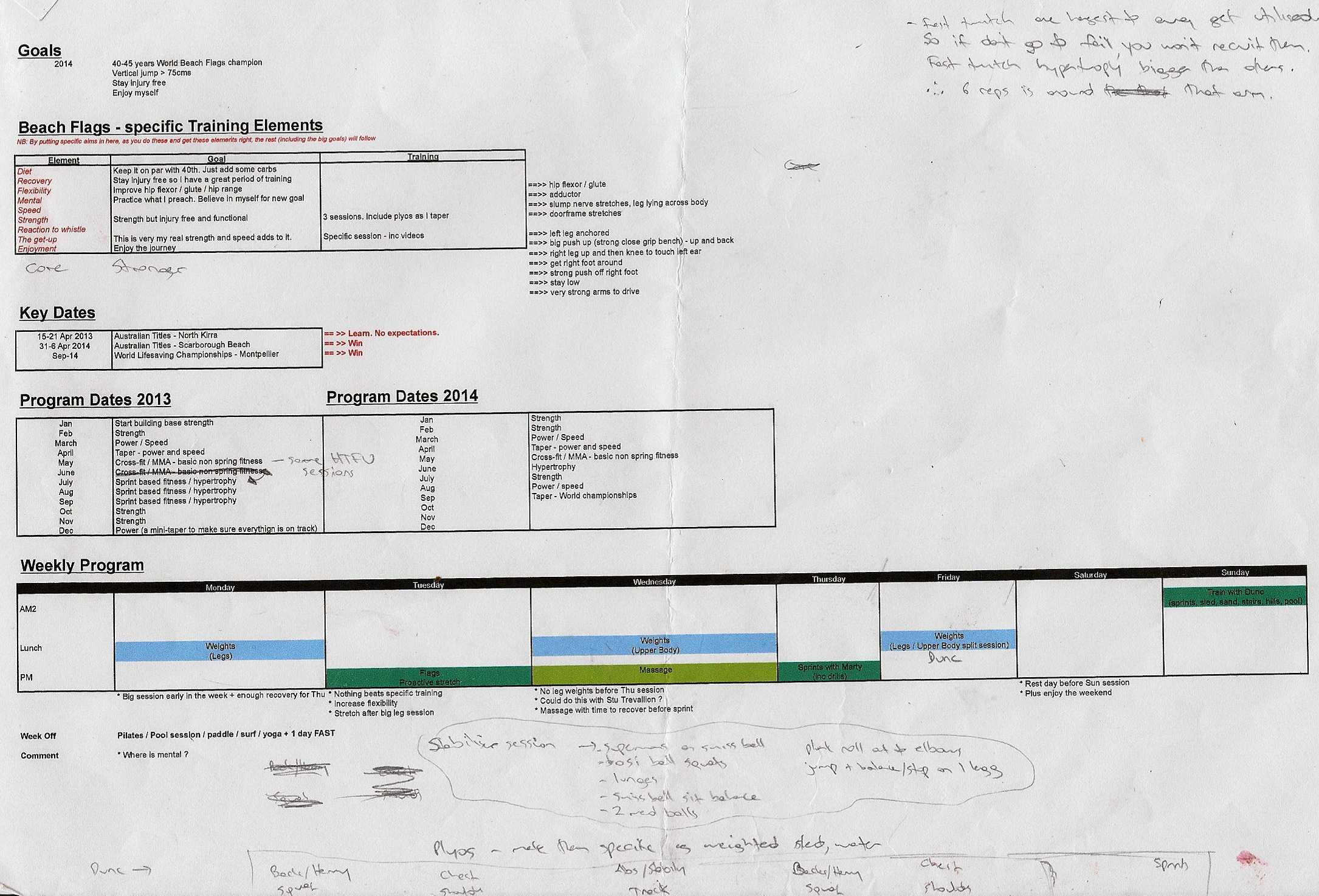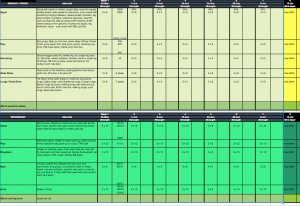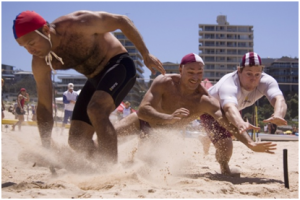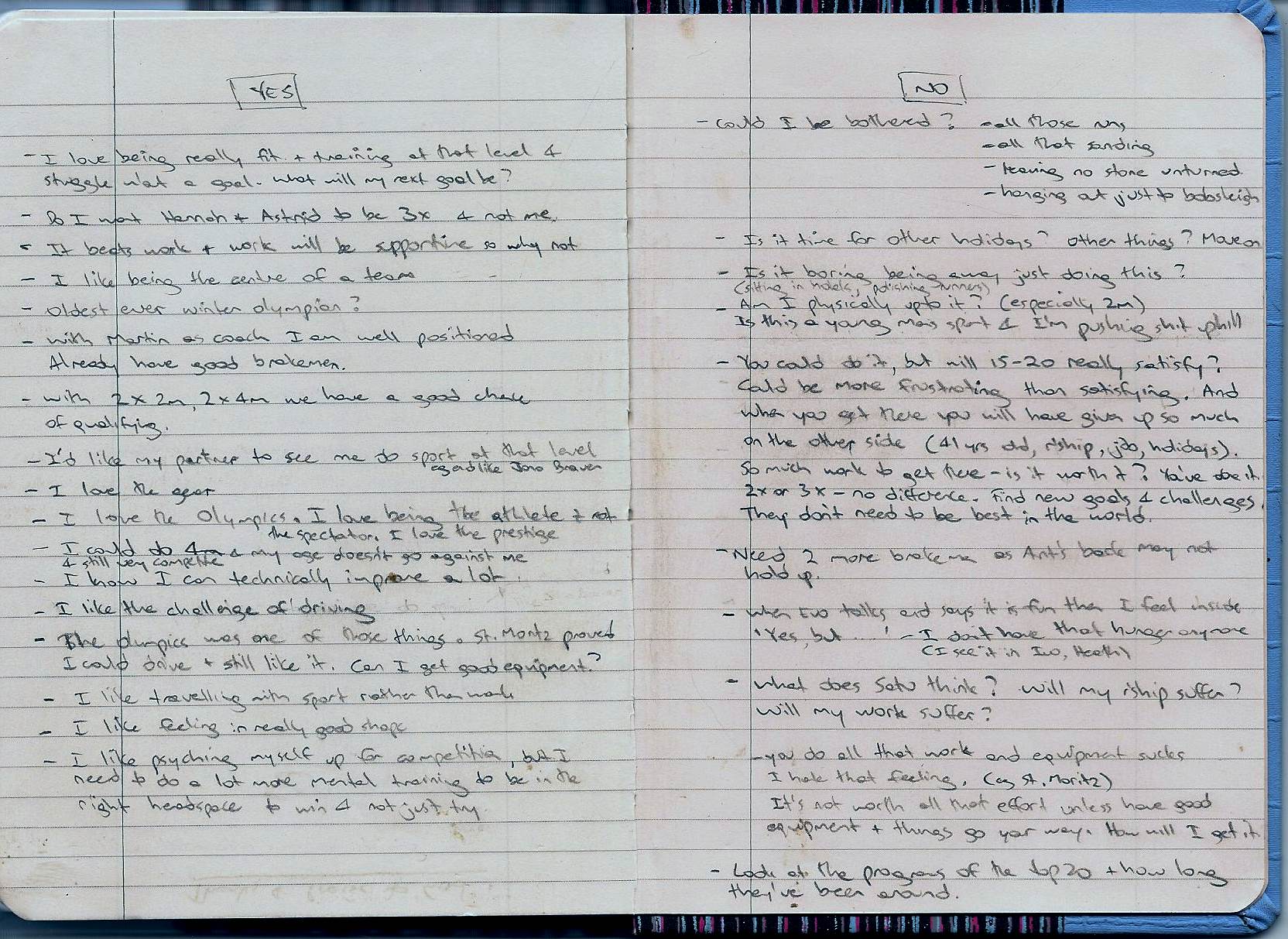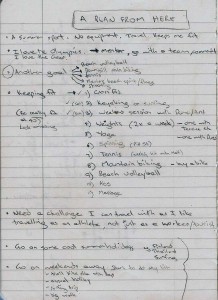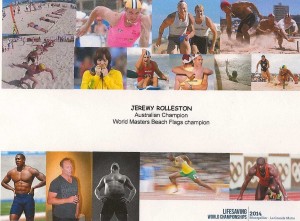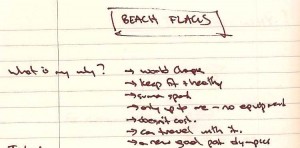The journey has begun … (Beach Flags – Part 5)
18 months I set myself a goal – to become World Champion (Masters) in the beach flags. And to achieve that goal I started a process that I have used when trying to achieve any goal I set – be that for the Olympics, rugby, work or something else in my life. I’ve taken you on that journey with me through four previous blog posts:
http://www.jeremyrolleston.com/the-journey-has-begun-beach-flags-part-1/
http://www.jeremyrolleston.com/the-journey-has-begun-beach-flags-part-2/
http://www.jeremyrolleston.com/the-journey-has-begun-beach-flags-part-3/
http://www.jeremyrolleston.com/the-journey-has-begun-beach-flags-part-4/
My hope is that by sharing with you a current and real example of mine that it really helps build on and solidify what I wrote about in my book about goal-setting and following your dreams. It’s not about me and the outcome of this goal in particular. It’s about the process and learnings and example. I want it to inspire you and equip you to go after whatever you want in YOUR life. (And I hope that it answers your original question Jesper).
So here’s the final instalment on chasing my goal of becoming world champion.
Staying focussed in the lead-up – The funny thing is that this all happened in the lead-up to my wedding. World Championships just happened to be 10 days after our wedding. Or perhaps better said – we organised our wedding for September 5th and World Championships were scheduled for the 15th. So half the battle for me was keeping up the training and keeping focussed with so much else going on in the 6 months prior – be they family arriving from overseas, or all the organisation that needed to be done, or wedding cakes that begged to be eaten, or finding the time to fit everything in, or how our honeymoon would fit in with this. Luckily my beautiful wife Satu was happy to let me fly off to France 5 days after our wedding and compete. Meanwhile she stayed home in Sydney and hung out with friends and family and we organised to meet in Thailand for our honeymoon immediately after competition ended. 🙂 You’d also be interested to know (or perhaps not to) that I trained on the morning of my wedding!
I’m here and it’s time to perform – there’s nothing like the feeling of arriving at a big competition like the Olympic Games or World Championships. You wonder how things are going to work out in the following few days. You also know internally whether you’ve done the training and preparation or whether you haven’t (this is not a good feeling). I knew I had trained hard, prepared well and was in good shape. So it was just a matter of performing on the day when it counted.



Prepared, motivated and focussed – there wasn’t much more to do now. And this in itself can be a challenge. Your body feels great but you have to force yourself to sit and do very little. To internalise and conserve your energy. To be focussed, but not over focussed too early – unleash that focus when it counts. (For me, the way to deal with this is to be organised and stick to a plan and routine. It takes my mind off things so I feel like I’m doing more than I am, I’m relaxed and I’m not thinking too much of the upcoming competition. And it makes sure I’ve thought of everything so the only thing that matters is performing when it counts). You also want to surround yourself with positive thoughts, belief and motivation. But at the same time to remain relaxed and also to enjoy the journey. Pre-competition is a funny time.


The Beach Sprint and Beach Flags – these photos aren’t of me as I was too busy concentrating on performing. They were taken after my events. But they’ll give you a good sense of everything.


World Champion – I did it. Mission accomplished. Goal achieved. World Champion in the beach sprint. And World Champion in the beach flags the next day. From retiring from bobsleigh; then discovering Surf-Life Saving as something that I enjoyed and wanted to do to keep me fit and healthy; to starting the sport and then having a dream and a big goal to win the world title in France in 18 months time; to training and all that was involved in that process along the way; to doing it !



The reward – whenever you set yourself goals you should give yourself a reward. Many people say to me “shouldn’t your goal be enough though?”. Well it should, but you always give yourself secondary leverage. Something else to look forward to. Something else to think about during the tough times. I mean, what harm is there in giving yourself more incentive to achieve what you want? For me, as someone with a ‘sweet tooth’ who had really tried hard to eat better and improve my nutrition, that was eating what I wanted for the next few weeks. First stop – Macdonalds at the airport ! Second stop – my honeymoon !


The end.
And now onto the next dream / goal – whatever that is and whenever that is. I have no idea what that is right now. It may be back in Surf Life Saving to win that elusive Australian title. It may be outside of sport and be more business focussed. Time will tell. And so will my heart !
In the meantime, here’s to your own dreams. Go after them without regret. Remember you’re better off regardless and you always regret the things you don’t do more than the things you do. You’ve only got one life so go for it !



















